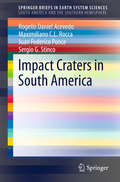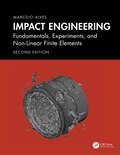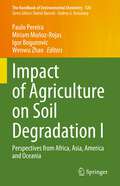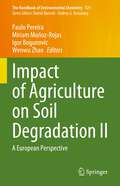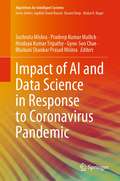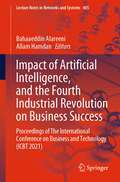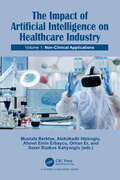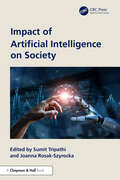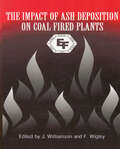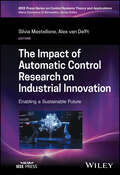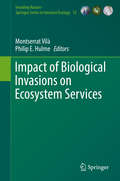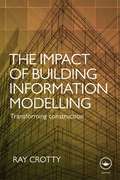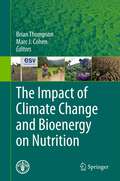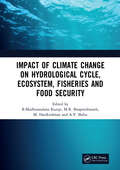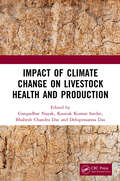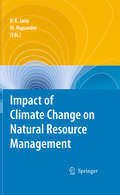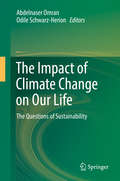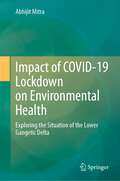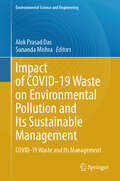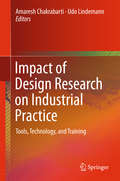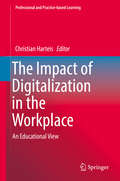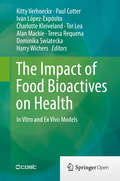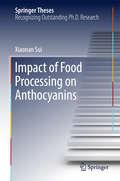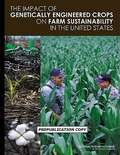- Table View
- List View
Impact Craters in South America
by Rogelio Daniel Acevedo Maximiliano C. L. Rocca Juan Federico Ponce Sergio G. StincoA complete and updated catalogue of impact craters and structures in South America from 2014 is presented here. Approximately eighty proven, suspected and disproven structures have been identified by several sources in this continent. All the impact sites of this large continent have been exhaustively reviewed: the proved ones, the possible ones and some very doubtful. Many sites remain without a clear geological "in situ" confirmation and some of them could be even rejected. Argentina and Brazil are leading the list containing almost everything detected. In Bolivia, Chile, Colombia, Guyana, Paraguay, Perú, Uruguay and Venezuela only a few were observed. Only Ecuador is waiting for new discoveries. So far, the largest well stated impact site is still the Araguainha structure in Brazil with its 40 kilometers in diameter. However, two possible impact structures are larger than Araguainha: Malvinas, (with 250 kilometers in diameter) and Vichada in Colombia, (50 kilometers). This study also reports the existence of some Tertiary-Quaternary glassy impactite layers: the "escorias" and "tierras cocidas" of the pampas in Argentina.
Impact Engineering: Fundamentals, Experiments, Nonlinear Finite Elements
by Marcílio AlvesThis second edition of Impact Engineering covers the dynamic analysis of structures undergoing small to large displacements, linear and nonlinear elastic material behavior to viscoplasticity, and the range of features of structural impact analysis.Individuals, as well as various governing bodies are concerned about protection against natural hazards, crash-type accidents, and terrorism- commonly referred to as "impact"- implying a rapid loading process. The book discusses the physics involved in such impact situations and incorporates analytical considerations as well as techniques to obtain and interpret experimental data and relevant numerical techniques. It also includes a chapter on scaling which is a relevant aspect when studying impact on large structures.This book will be useful for advanced students and professionals in civil and mechanical engineering as well as for students and researchers in applied physics and other relevant disciplines.
Impact of Agriculture on Soil Degradation I: Perspectives from Africa, Asia, America and Oceania (The Handbook of Environmental Chemistry #120)
by Paulo Pereira Miriam Muñoz-Rojas Igor Bogunovic Wenwu ZhaoThis is the first of two volumes that together provide a global overview of the impact of agriculture on soil degradation, tracing the most critical drivers like the use and abuse of agrochemicals, mechanization, overgrazing, irrigation, slash and burn agriculture, and the use of plastics. This book covers the main effects of agriculture practices on soil degradation in several countries from Africa, America, Asia, and Oceania, and it elucidates the impact of chemical agents on soil quality, namely, the use of fertilizers, herbicides, pesticides, soil acidification and microplastics pollution. In these continents, a large number of the population depend on agriculture, which sets an enormous pressure on the ecosystems. Divided into 13 chapters, the book offers authoritative contributions about the fundamental soil degradation problems in countries such as Argentina, Australia, Peru and Bolivia, Brazil, Chile, China, Colombia, India, Israel, Kenya, Mexico, South Africa, the United States of America. As soil degradation issues are often linked with biodiversity loss and poverty, readers will also find in this book an important discussion of the different social, economic, political, and environmental aspects contributing to soil quality and sustainable management. Given the breadth and depth of its coverage, the book offers an invaluable source of information for researchers, students, environmental managers and policymakers alike.
Impact of Agriculture on Soil Degradation II: A European Perspective (The Handbook of Environmental Chemistry #121)
by Paulo Pereira Miriam Muñoz-Rojas Igor Bogunovic Wenwu ZhaoThis is the second of two volumes that together provide a global overview of the impact of agriculture on soil degradation, tracing the most critical drivers like the use and abuse of agrochemicals, mechanization, overgrazing, irrigation, slash and burn agriculture, and the use of plastics.Soil degradation caused by agriculture practices is a complex issue which depends on the interaction of social, economic, political, and environmental aspects. In this book, expert contributors elucidate the extension of the effects of agriculture on soil degradation in Europe, a continent with different cultures and political backgrounds that affect agricultural practices. Readers will also find in this book authoritative solutions to minimize the effects of agriculture intensification and land-use in this continent. Divided into 12 chapters, the book offers a European perspective on soil quality and sustainable management, including case studies about the impact of chemical agents like fertilizers, herbicides, pesticides, and soil acidification and microplastics pollution in agriculture practices from countries such as Croatia, Czech Republic, Estonia, Latvia and Lithuania, Germany, Portugal and Greece, Hungary, Iceland, Italy, Slovenia, Spain, Sweden, and Ukraine. Given the breadth and depth of its coverage, the book offers an invaluable source of information for researchers, students and environmental managers alike.
Impact of AI and Data Science in Response to Coronavirus Pandemic (Algorithms for Intelligent Systems)
by Sushruta Mishra Pradeep Kumar Mallick Hrudaya Kumar Tripathy Gyoo-Soo Chae Bhabani Shankar Prasad MishraThe book presents advanced AI based technologies in dealing with COVID-19 outbreak and provides an in-depth analysis of variety of COVID-19 datasets throughout globe. It discusses recent artificial intelligence based algorithms and models for data analysis of COVID-19 symptoms and its possible remedies. It provides a unique opportunity to present the work on state-of-the-art of modern artificial intelligence tools and technologies to track and forecast COVID-19 cases. It indicates insights and viewpoints from scholars regarding risk and resilience analytics for policy making and operations of large-scale systems on this epidemic. A snapshot of the latest architectures, frameworks in machine learning and data science are also highlighted to gather and aggregate data records related to COVID-19 and to diagnose the virus. It delivers significant research outcomes and inspiring new real-world applications with respect to feasible AI based solutions in COVID-19 outbreak. In addition, it discusses strong preventive measures to control such pandemic.
Impact of Artificial Intelligence, and the Fourth Industrial Revolution on Business Success: Proceedings of The International Conference on Business and Technology (ICBT 2021) (Lecture Notes in Networks and Systems #485)
by Bahaaeddin Alareeni Allam HamdanThis book constitutes the refereed proceedings of the International Conference on Business and Technology (ICBT2021) organized by EuroMid Academy of Business & Technology (EMABT), held in Istanbul, between 06–07 November 2021. In response to the call for papers for ICBT2021, 485 papers were submitted for presentation and inclusion in the proceedings of the conference. After a careful blind refereeing process, 292 papers were selected for inclusion in the conference proceedings from forty countries. Each of these chapters was evaluated through an editorial board, and each chapter was passed through a double-blind peer-review process.The book highlights a range of topics in the fields of technology, entrepreneurship, business administration, accounting, and economics that can contribute to business development in countries, such as learning machines, artificial intelligence, big data, deep learning, game-based learning, management information system, accounting information system, knowledge management, entrepreneurship, and social enterprise, corporate social responsibility and sustainability, business policy and strategic management, international management and organizations, organizational behavior and HRM, operations management and logistics research, controversial issues in management and organizations, turnaround, corporate entrepreneurship, innovation, legal issues, business ethics, and firm gerial accounting and firm financial affairs, non-traditional research, and creative methodologies.These proceedings are reflecting quality research contributing theoretical and practical implications, for those who are wise to apply the technology within any business sector. It is our hope that the contribution of this book proceedings will be of the academic level which even decision-makers in the various economic and executive-level will get to appreciate.
The Impact of Artificial Intelligence on Healthcare Industry: Volume 1: Non-Clinical Applications
by Mustafa Berktas Abdulkadir Hiziroglu Ahmet Emin Erbaycu Orhan Er Sezer Bozkus KahyaogluHealthcare and medical science are inherently dependent on technological advances and innovations for improved care. In recent times we have witnessed a new drive in implementing these advances and innovations through the use of Artificial Intelligence, in both clinical and non-clinical areas.The set of 2 volumes aims to make available the latest research and applications to all, and to present the current state of clinical and non-clinical applications in the health sector and areas open to development, as well as to provide recommendations to policymakers. This volume covers non-clinical applications. The chapters covered in this book have been written by professionals who are experts in the healthcare sector and have academic experience.
Impact of Artificial Intelligence on Society
by Joanna Rosak-Szyrocka Sumit TripathiThe book presents a comprehensive and interdisciplinary exploration of the impact of AI on various sectors of society to foster a greater understanding of the opportunities and challenges presented by this transformative technology. It explores the impact AI has had on varied sectors of society, including healthcare, education, the workplace, and the economy. It provides a holistic view of this fast-growing technology by critical study of the possible benefits and drawbacks linked with the application of AI in many industries. The book also examines the ethical, social, and economic implications of AI and the potential risks and challenges associated with its use. Focuses on the future influence of AI, providing insights into how it could disrupt several industries and change the way we live, work, and connect with one another Explores how AI can be used to tackle global issues such as climate change, food security, and public health concerns Offers case studies and specific examples of how artificial intelligence is being employed in many industries, covering both successes and failures Investigates cutting-edge technology breakthroughs in AI and how they can be used to improve efficiency, productivity, and performance across multiple industries Understands the limitations and potential biases of artificial intelligence, as well as the significance of human monitoring and accountability The book is intended for researchers, practitioners, policymakers, and students who are interested in understanding the nature and role of AI with regard to different sectors of society.
The Impact Of Ash Deposition On Coal Fired Plants: Proceedings of the Engineering Foundation Conference Held at the St. John's Swallow Hotel, Solihull, England
by Jim WilliamsonCoal provides almost 40% of the world's electricity, and despite the understandable concern with respect to the environmental impact associated with coal use, forecasts from the International Energy Agency predict, that worldwide coal use will increase by up to 2% per annum until the year 2OlO. Faced with this increase, it is clearly important that the most efficient and environmentally acceptable clean coal technologies are available. This book is comprised of the proceedings of the Engineering Foundation Conference held in June 1993 in England. The objective of the conference was to present ideas on methods of predicting and reducing the effects of ash deposition in coal conversion systems, highlighting the problems experienced in industry, considering both utilities and industrial plants, and providing a view of the technology of coal ash deposition and its impact. Better techniques are needed to reduce the impact of ash deposition in coal fired plants, and these proceedings should form a reference document for anyone either experiencing slagging or actively engaged in trying to understand or eliminate the phenomenon.
The Impact of Automatic Control Research on Industrial Innovation: Enabling a Sustainable Future (IEEE Press Series on Control Systems Theory and Applications)
by Silvia Mastellone Alex Van DelftThe Impact of Automatic Control Research on Industrial Innovation Bring together the theory and practice of control research with this innovative overview Automatic control research focuses on subjects pertaining to the theory and practice of automation science and technology subjects such as industrial automation, robotics, and human???machine interaction. With each passing year, these subjects become more relevant to researchers, policymakers, industrialists, and workers alike. The work of academic control researchers, however, is often distant from the perspectives of industry practitioners, creating the potential for insights to be lost on both sides. The Impact of Automatic Control Research on Industrial Innovation seeks to close this distance, providing an industrial perspective on the future of control research. It seeks to outline the possible and ongoing impacts of automatic control technologies across a range of industries, enabling readers to understand the connection between theory and practice. The result is a book that combines scholarly and practical understandings of industrial innovations and their possible role in building a sustainable world. The Impact of Automatic Control Research on Industrial Innovation readers will also find: Insights on industrial and commercial applications of automatic control theory. Detailed discussion of industrial sectors including power, automotive, production processes, and more. An applied research roadmap for each sector. This book is a must-own for both control researchers and control engineers, in both theoretical and applied contexts, as well as for graduate or continuing education courses on control theory and practice.
Impact of Biological Invasions on Ecosystem Services
by Montserrat Vilà Philip E. HulmeThe book presents an analysis of the ecological, economic and social threats posed by the introduction and spread of non-native species. It provides a comprehensive description of impacts of non-native species from all five kingdoms of life across all ecosystems of the world. New insights into the impacts arising from biological invasions are generated through taking an ecosystem services perspective. This work highlights that management of biological invasions is needed not only to sustain biodiversity and the environment, but also to safeguard productive sectors such as agriculture, forestry and fisheries, as well as to preserve human health and well-being.
The Impact of Building Information Modelling: Transforming Construction
by Ray CrottyConstruction projects involve a complex set of relationships, between parties with different professional backgrounds trying to achieve a very complex goal. Under these difficult circumstances, the quality of information on which projects are based should be of the highest possible standard. The line-based, two dimensional drawings on which conventional construction is based render this all but impossible. This is the source of some major shortcomings in the construction industry, and this book focuses on the two most fundamental of these: the failure to deliver projects predictably: to the required quality, on time and within budget; and the failure of most firms in the industry to make a survivable level of profit. By transforming the quality of information used in building, BIM aims to transform construction completely.After describing and explaining these problems, the way in which BIM promises to provide solutions is examined in detail. A discussion of the theory and practice of BIM is also provided, followed by a review of various recent surveys of BIM usage in the US, UK and selected European economies. The way in which other industries, including retail and manufacturing, have been transformed by information are explored and compared with current developments in the deployment of BIM in construction. Five case studies from the UK show how BIM is being implemented, and the effects it is having on architects and contractors.This book is perfect for any construction professional interested in improving the efficiency of their business, as well as undergraduate and postgraduate students wishing to understand the importance of BIM.
The Impact of Climate Change and Bioenergy on Nutrition
by Marc J Cohen Brian ThompsonClimate changes will affect food production in a number of ways. Crop yields, aquatic populations and forest productivity will decline, invasive insect and plant species will proliferate and desertification, soil salinization and water stress will increase. Each of these impacts will decrease food and nutrition security, primarily by reducing access to and availability of food, and also by increasing the risk of infectious disease. Although increased biofuel demand has the potential to increase incomes among producers, it can also negatively affect food and nutrition security. Land used for cultivating food crops may be diverted to biofuel production, creating food shortages and raising prices. Accelerations in unregulated or poorly regulated foreign direct investment, deforestation and unsustainable use of chemical fertilizers may also result. Biofuel production may reduce women's control of resources, which may in turn reduce the quality of household diets. Each of these effects increases risk of poor food and nutrition security, either through decreased physical availability of food, decreased purchasing power, or increased risk of disease. The Impact of Climate Change and Bioenergy on Nutrition articulates the links between current environmental issues and food and nutrition security. It provides a unique collection of nutrition statistics, climate change projections, biofuel scenarios and food security information under one cover which will be of interest to policymakers, academia, agronomists, food and nutrition security planners, programme implementers, health workers and all those concerned about the current challenges of climate change, energy production, hunger and malnutrition.
Impact of Climate Change on Hydrological Cycle, Ecosystem, Fisheries and Food Security
by B. Madhusoodana KurupClimate change has emerged as the most pressing global challenge of the 21st century and it has a dramatic effect on natural ecosystems and environment. Intelligent mitigation strategies to minimise climate change impacts can result in advanced, novel technologies; healthier aquatic ecosystems and higher food security and well-being for humans. The book includes 45 Chapters by expert authors, covering (i) Hydrometeorology and hydrology, (ii) Natural hazards and disaster risk management, (iii) Aquaculture, (iv) Changing biodiversity scenarios, (v) Capture fisheries, (vi) Food and nutritional insecurity, (vii) Climate change and socio-economic scenarios, and allied areas. It is hoped that this volume will further our understanding and research achievements in the field of climate change and its consequences and facilitate the synthesis of information on how climate-related changes will influence oceans, marine and inland ecosystems, hydrological cycles, fisheries and aquaculture and coastal communities and will be immensely useful to planners, scientists, conservationists, environmentalists, academicians, students and all those who are directly or indirectly involved in the study of impact of climate change and mitigation measures Note: T& F does not sell or distribute the Hardback in India, Pakistan, Nepal, Bhutan, Bangladesh and Sri Lanka.
Impact of Climate Change on Livestock Health and Production
by G D Nayak K K Sardar B C Das D P DasThis volume of 30 chapters contributed by reputed authors covers: Diversification of livestock and crops. Integration of livestock systems with forestry and crop production. Drought and heat wave tolerant varieties. Strategies for reduction of Green House Gases emission from ruminants. Application of GIS and remote sensing technologies. Breeds with inherent genetic capabilities to adapt to climate change. This book also takes into account the climate change adaptation, mitigation practices, and policy frameworks for promotion of sustainable livestock and poultry production. This book is co-published with NIPA. Taylor and Francis does not sell or distribute its print and electronic editions in India, Pakistan, Nepal, Bhutan, Bangladesh and Sri Lanka.
Impact of Climate Change on Natural Resource Management
by Bipal Kr. Jana Mrinmoy MajumderAs climate change takes hold, there is an ever-growing need to develop and apply strategies that optimize the use of natural resources, both on land and in water. This book covers a huge range of strategies that can be applied to various sectors, from forests to flood control. Its aim, as with resource management itself, is to combine economics, policy and science to help rehabilitate and preserve our natural resources. Beginning with papers on carbon sequestration, including the practice of artificial desertification, the topics move on to cover the use of distributed modeling and neural networks in estimating water availability and distribution. Further chapters look at uncertainty analysis applied to the spatial variation of hydrologic resources, and finally the book covers attempts at estimating meteorological parameters in the context of hydrological variables such as evapo-transpiration from stream flow. Within the next decade, the effects of climate change will be severe, and felt by ordinary human beings. This book proposes a raft of measures that can mitigate, if not reverse, the impact of global warming on the resources we have all come to depend on.
The Impact of Climate Change on Our Life: The Questions Of Sustainability
by Abdelnaser Omran Odile Schwarz-HerionThis book introduces the highly topical issue from many different angles, sensitizing readers to the various challenges to human life posed by climate change, identifying possible intentional and inadvertent anthropogenic factors and consequences, and seeking socially and environmentally viable solutions. The book begins by examining the impact of the climate change discussion on science, politics, economy and culture – from its historical origin in the first Club of Rome Report and its inclusion in the UN's SDGs to the Paris Agreement and beyond. Comprising 12 chapters, it analyses the factors which caused the catastrophic 2014 Kelantan flood in Malaysia, focusing on the Kuala Krai district and discusses mud architecture in Wadi Hadramout, Yemen and mitigating the expected effects of climate change on this unique architecture and cultural heritage. It also examines the economic costs of climate change on health and the increased burden on individual expenditures and national health systems. The role of climate change in the water-energy nexus and efforts to increase efficiency in energy and water end-use to increase Queensland’s agricultural sector’s resilience in Australia is addressed, as is water security and climate change issues in developing countries and the potential of partnership procurement strategies for managing sustainable urban water supply in Nigerian cities. It also includes a chapter offering a new approach to waste management, exploring to what extent waste can complicate our daily actions and influence environmental decay, and recommending that renewable materials be sorted and separated from other types of materials to avoid cross-contamination, to increase the value of the materials, and to ease the process of manufacturing. Subsequent chapters identify factors sustaining the municipal solid waste management and practices in Ajdabiya city in Libya, and look at accounting disclosure remedies by exploring areas in which sustainability reporting could expand beyond corporate environmental reporting to additional disclosures, curbing recklessness in pursuing merely economic goals. The book shows – from the perspective of agriculture – how human activities can increase the negative impacts of climate change on lifestyle in Malaysia, suggesting alternative lifestyles and encouraging international cooperative efforts. The last chapters evaluate the impacts of various environmental factors on the local tourism sector in Pakistan, and discuss strategies to tackle climate change, focusing on the opportunities and risks of climate engineering. Since these risks encompass inadvertent negative effects and targeted abuse for covert weather warfare and terrorism that violate the UN’s ENMOD convention, the author recommends viable alternatives to deal with climate change.
Impact of COVID-19 Lockdown on Environmental Health: Exploring the Situation of the Lower Gangetic Delta
by Abhijit MitraThis book examines the impacts that the COVID-19 lockdown has had on environmental and ecological health, with a focus on coastal ecosystems in the Lower Gangetic Delta. The book begins with an overview of COVID-19's spread and impact before and after the lockdown in the focus region, then addresses the specific impacts that the lockdown period had and continues to have on air quality, marine and estuarine water quality, coastal biodiversity, and the livelihoods of the region's inhabitants, especially those who live below the poverty line. The decrease in human activity combined with the complete closure of various sectors, including air travel, oil and gas drilling, and construction, has had a pronounced effect on biodiversity and overall environmental health that is yet to be fully realized. The book sheds light on these changes and assesses how biodiversity, ambient air quality, and ecosystem functioning will progress as COVID-19 remains a threat and the lockdown persists. The study will be of interest to researchers, government officials and professionals dealing with disaster management, environmental science, biological science, and health.
Impact of COVID-19 Waste on Environmental Pollution and Its Sustainable Management: COVID-19 Waste and Its Management (Environmental Science and Engineering)
by Alok Prasad Das Sunanda MishraThis book focuses on challenges that have arisen because of trash discharges and their potential causes and provides long-term sustainable solutions. Globally, the COVID-19 pandemic has caused immense devastation, leading to numerous fatalities as well as substantial economic losses and health issues. With the rise in COVID-19 cases, the amount of biomedical waste has multiplied, exposing more people to the epidemic. For developing countries, waste management is already a problem, and the waste generated during this pandemic situation has made things worse. If improper waste management techniques are not changed, the world will face a new crisis that could be referred to as a "garbage crisis." The increased quantity of COVID-19-associated waste (CAW) and their presence in the environment make them more vulnerable, potentially increasing the danger of food chain contamination. A few countries have already started putting emergency plans in place to address the “waste crisis.” Given the paucity of information on the mutational features and potential hosts of this newly discovered COVID-19, there is a pressing need for an effective plan to protect India's ecosystem against further contamination. To handle the current crisis and prevent the anticipated waste disaster, it is imperative to construct a more effective, automated, computerized, and well-modified waste management system during the COVID-19 period.
Impact of Design Research on Industrial Practice
by Amaresh Chakrabarti Udo LindemannShowcasing exemplars of how various aspects of design research were successfully transitioned into and influenced, design practice, this book features chapters written by eminent international researchers and practitioners from industry on the Impact of Design Research on Industrial Practice. Chapters written by internationally acclaimed researchers of design analyse the findings (guidelines, methods and tools), technologies/products and educational approaches that have been transferred as tools, technologies and people to transform industrial practice of engineering design, whilst the chapters that are written by industrial practitioners describe their experience of how various tools, technologies and training impacted design practice. The main benefit of this book, for educators, researchers and practitioners in (engineering) design, will be access to a comprehensive coverage of case studies of successful transfer of outcomes of design research into practice; as well as guidelines and platforms for successful transfer of research into practice.
The Impact of Digitalization in the Workplace: An Educational View (Professional and Practice-based Learning #21)
by Christian HarteisThis edited volume brings together researchers from various disciplines (i.e. education, psychology, sociology, economy, information technology, engineering) discussing elementary changes at workplaces occurring through digitalization, and reflecting on educational challenges for individuals, organizations, and society. The latest developments in information and communication technology seem to open new potential, and the crucial question arises which kind of work can be replaced by technology? The contributors to this volume are scholars who have been conducting research on the influence of technological change on work and individuals for a long time. The book addresses researchers as well as practitioners in the field of adult education and human resource development.
The Impact of Food Bioactives on Health
by Kitty Verhoeckx Paul Cotter Iván López-Expósito Charlotte Kleiveland Tor Lea Alan Mackie Teresa Requena Dominika Swiatecka Harry Wichers"Infogest" (Improving Health Properties of Food by Sharing our Knowledge on the Digestive Process) is an EU COST action/network in the domain of Food and Agriculture that will last for 4 years from April 4, 2011. Infogest aims at building an open international network of institutes undertaking multidisciplinary basic research on food digestion gathering scientists from different origins (food scientists, gut physiologists, nutritionists. . . ). The network gathers 70 partners from academia, corresponding to a total of 29 countries. The three main scientific goals are: Identify the beneficial food components released in the gut during digestion; Support the effect of beneficial food components on human health; Promote harmonization of currently used digestion models Infogest meetings highlighted the need for a publication that would provide researchers with an insight into the advantages and disadvantages associated with the use of respective in vitro and ex vivo assays to evaluate the effects of foods and food bioactives on health. Such assays are particularly important in situations where a large number of foods/bioactives need to be screened rapidly and in a cost effective manner in order to ultimately identify lead foods/bioactives that can be the subject of in vivo assays. The book is an asset to researchers wishing to study the health benefits of their foods and food bioactives of interest and highlights which in vitro/ex vivo assays are of greatest relevance to their goals, what sort of outputs/data can be generated and, as noted above, highlight the strengths and weaknesses of the various assays. It is also an important resource for undergraduate students in the 'food and health' arena.
Impact of Food Processing on Anthocyanins
by Xiaonan SuiThis thesis studies the impact of food processing on the stability and antioxidant capacity of anthocyanins in aqueous and real food systems. It investigates the effects of temperature and pH on the stability and antioxidant capacity of anthocyanins in aqueous systems and in real semi-solid and solid food systems including bread and biscuits. The results of this thesis offer food manufacturers valuable guidelines on the production of functional foods containing anthocyanins, helping to reduce anthocyanins loss and achieve a desired amount of anthocyanins in foods with extra health benefits.
The Impact of Genetically Engineered Crops on Farm Sustainability in the United States
by National Research Council of the National AcademiesSince genetically engineered (GE) crops were introduced in 1996, their use in the United States has grown rapidly, accounting for 80-90 percent of soybean, corn, and cotton acreage in 2009. To date, crops with traits that provide resistance to some herbicides and to specific insect pests have benefited adopting farmers by reducing crop losses to insect damage, by increasing flexibility in time management, and by facilitating the use of more environmentally friendly pesticides and tillage practices. However, excessive reliance on a single technology combined with a lack of diverse farming practices could undermine the economic and environmental gains from these GE crops. Other challenges could hinder the application of the technology to a broader spectrum of crops and uses. Several reports from the National Research Council have addressed the effects of GE crops on the environment and on human health. However, The Impact of Genetically Engineered Crops on Farm Sustainability in the United States is the first comprehensive assessment of the environmental, economic, and social impacts of the GE-crop revolution on U.S. farms. It addresses how GE crops have affected U.S. farmers, both adopters and nonadopters of the technology, their incomes, agronomic practices, production decisions, environmental resources, and personal well-being. The book offers several new findings and four recommendations that could be useful to farmers, industry, science organizations, policy makers, and others in government agencies.
Impact of Government Expenditure on Growth: The Case of Azerbaijan
by Junko Koeda Vitali KramarenkoA report from the International Monetary Fund.
